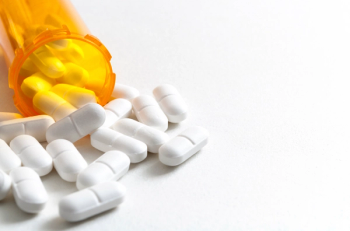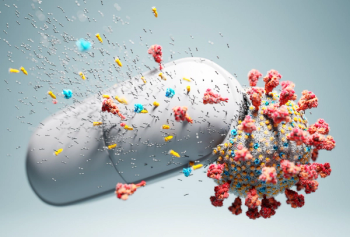
Internal analgesics: Where even small changes are meaningful
stockchecker on internal analgesics
Internal analgesics:
Where even small changes are meaningful
The Hamacher Resource Group provided the information for this article. The Milwaukee company provides marketing services and business intelligence to the healthcare industry. Wholesalers, manufacturers, and retailers partner with Hamacher Resource Group to improve their profitability. For more information, visit
The internal analgesics market grew 2.6% in 2000, and analysts at D.P. Hamacher & Associates (DPH&A) believe that four factors are shaping this growth: The number of people with arthritis is increasing; The Food & Drug Administration approved migraine-relief claims of some existing over-the-counter analgesics; people are purchasing new product forms; and many consumers prefer private-label products.
The arthritis market
Demographics. As the population ages, the number of people battling the aches and pains of arthritis grows. Analysts expect the numbers to increase from the current 43 million to 60 million by the year 2020. Moreover, roughly 45% of current arthritis sufferers say they rely on an OTC product to manage their pain. Sales of arthritis products have risen 17%. In fact, arthritis products have expanded their share of the total internal analgesics category from 2.3% to 4.4%. The categorys growth2.6%was modest by comparison.
Outlook. The question is will this subcategory continue to grow? The answer: Only 45% of those suffering the discomfort of arthritis now use OTC products. The subcategory has plenty of growth potential.
Shift from relief to management. Consumers are shifting their interest from remedies that promise pain relief to those that promise to manage pain. Specifically, the focus is on the dietary supplements, glucosamine sulfate and glucosamine/chondroitin. Both supplements are producing double-digit sales gains in the dietary supplement category. The success of glucosamine products has been so great that the two largest analgesics manufacturers, McNeil and Whitehall, have developed their own supplements.
Merchandising shift. Whats more, these two companies are bucking traditional shelf placement, abandoning the dietary supplement shelves for life in the fast lane, seeking placement in the internal analgesics aisle. Our analysts block these products with their parent brands. McNeils Aflexa is merchandised with Tylenol, and Whitehalls Flexagen occupies shelf space with Advil.
Name change. Heres proof of the strength of the arthritis segment. Tylenol Extended Relief changed its name to Tylenol Arthritis Caplets and, in so doing, jumped from No. 105 to No. 6 in DPH&As rankings.
Migraine relief
An estimated 23 million Americans suffer from migraine headaches. Symptoms include a throbbing head, nausea, vision impairment, aura or flashing light, and sensitivity to light and sound. Hormonal changes, stress, alcohol, caffeine, lack of sleep, or missed meals can trigger migraines. Roughly 17.2 million women experience migraine headaches, while fewer men5.8 millionundergo the same misery.
New FDA-approved indications have enabled manufacturers to enter products into the migraine pain market that are the same as the companies already-existing general analgesics. Advil, Excedrin, and Motrin donned new names and packaging mandated by the FDA to include migraine-specific directions and indications. With 15 million Americans choosing self-medication over outpatient care for migraines, manufacturers believe this new subcategory will produce $148 million in sales in its first year. Since 1998, when the first product of its kind, Excedrin Migraine, was introduced, sales have steadily increased. New geltab forms were released in September.
New forms
Of the 26 new internal analgesics introduced in 2001, seven were liqui-gels, gelcaps, or geltabs. The number underscores the increasing popularity of easy-to-swallow medications that dissolve quickly and provide faster relief. Tylenol Extra Strength Gelcap 50s and 100s both rank in the top 10 of DPH&A's analgesics category. Although caplets are still very strong sellers, gel forms are gaining ground.
Private label
Private-label products account for nearly 22% of the categorys dollar sales and 29% of unit sales. Thats 4% more than the top brand. Some cases in point: Private label now generates 32% of ibuprofen sales, 22% of aspirin volume, and 17% of acetaminophen sales. This trend is shored up by the rising cost of medications. To help patients economize, physicians recommend private-label and generic versions of popular brands.
How to merchandise
According to DPH&A analysts both large sizes and small sizes are selling well. Therefore, if you have to cut sizes to keep a good selection of forms, cut middle sizes first. Also, stock a variety of arthritis- and migraine-specific products. Make sure that private labels are getting their fair share on your shelves. Double facings of the top sellers will help build incremental salesand produce bigger margins than brands.
The category has grown "only" 2.6%, yet what seems like a puny percentage translates into $76 million in such a huge category. If you want to succeed in this dynamic category, keep a well-organized department with a wide variety of specialty items and private-label products.
ADULT INTERNAL ANALGESICS CATEGORY SUMMARY
ADULT INTERNAL ANALGESICS NEW ITEMS
INTERNAL ANALGESICS NEVER-OUT LIST
Use this never-out list to monitor your in-stock condition. The items listed account for more than 50% of the dollar sales in the adult internal analgesics department. An out-of-stock on any of these items represents a significant loss of sales.
____ Advil Caplet 24
____ Advil Caplet 50
____ Advil Gelcap 24
____ Advil Liquigel 20
____ Advil Tablet 24
____ Advil Tablet 50
____ Advil Tablet 100
____ Aleve Caplet 24
____ Aleve Caplet 50
____ Aleve Tablet 24
____ Azo Standard Tablet 30
____ Bayer Aspirin Chewable Cherry 36
____ Bayer Aspirin Chewable Orange 36
____ Bayer Aspirin Low Regimen Tablet 120
____ Bayer Aspirin Tablet 24
____ Bayer Aspirin Tablet 50
____ Bayer Aspirin Tablet 100
____ Doans Extra Strength Caplet 24
____ Ecotrin Regular Strength Tablet 100
____ Excedrin Migraine Caplet 24
____ Excedrin Migraine Tablet 24
____ Motrin IB Caplet 24
____ Tylenol Arthritis Caplet 24
____ Tylenol Arthritis Caplet 50
____ Tylenol Arthritis Caplet 100
____ Tylenol Extra Strength Caplet 24
____ Tylenol Extra Strength Caplet 50
____ Tylenol Extra Strength Caplet 100
____ Tylenol Extra Strength Gelcap 24
____ Tylenol Extra Strength Gelcap 50
____ Tylenol Extra Strength Gelcap 100
____ Tylenol Extra Strength Geltab 24
____ Tylenol Extra Strength Geltab 50
____ Tylenol Extra Strength Geltab 100
____ Tylenol Extra Strength Tablet 30
____ Tylenol PM Extra Strength Caplet 24
____ Tylenol PM Extra Strength Gelcap 24
____ Tylenol PM Extra Strength Geltab 24
ADULT INTERNAL ANALGESICS COMPETITIVE SHOP LIST
This list includes the most popular and price-sensitive SKUs in the adult internal analgesics department. Use it to see if your prices on these key items fall within the average everyday retail range.
Sandra Levy. Internal analgesics: Where even small changes are meaningful.
Drug Topics
2002;6.
Newsletter
Pharmacy practice is always changing. Stay ahead of the curve with the Drug Topics newsletter and get the latest drug information, industry trends, and patient care tips.





























































































































